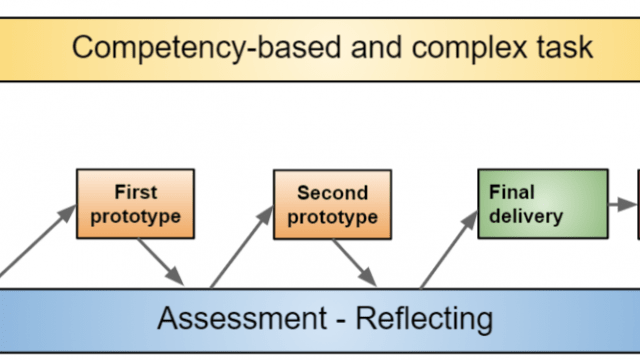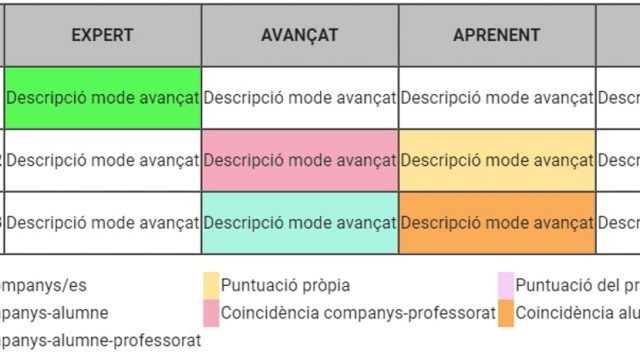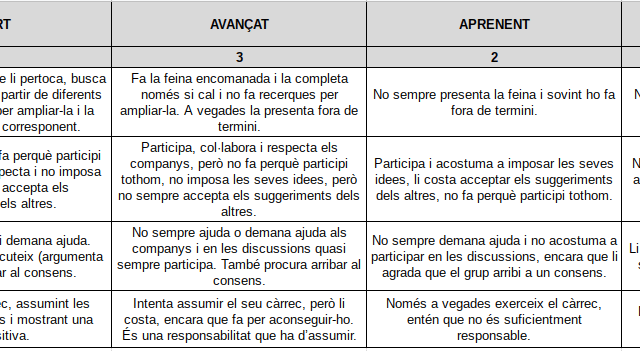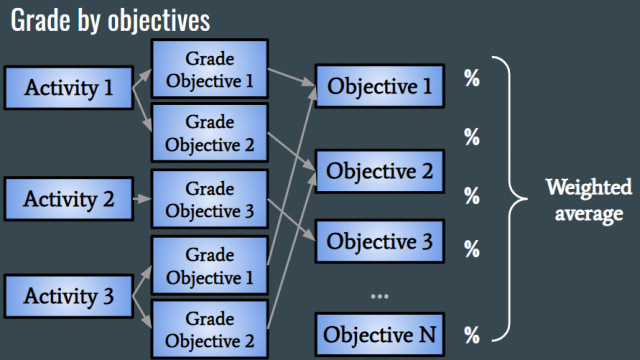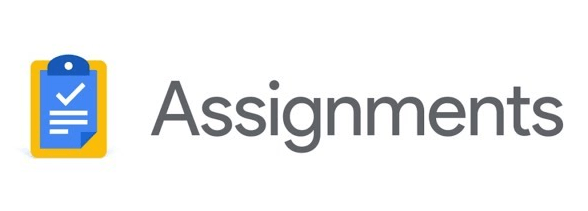For some time now, when I do trainings, I have been meeting teachers who want to reduce the grades in their subjects, but don’t really know how to do it. Since we opened the No Grades group on Facebook (not yet part of the group? There are already over 400 of us!), I get even more enquiries from teachers who are concerned about the over-reliance of students on grades.
Category: Avaluació
Latest CoRubrics updates
In the last month, CoRubrics has added a couple of updates to further encourage formative assessment. CoRubrics has always been primarily a formative assessment tool. But the use of numbers to indicate the level achieved did not facilitate this conception of assessment.
There is life beyond the analytical rubric
Analytical rubrics have been in vogue for a few years now. You talk to teachers at all levels and many of them use analytical rubrics. And it seems that by using these rubrics they are already doing formative and formative evaluation.
My experience, however, tells me quite the opposite. I am not as radical as a good friend of mine who says that the rubrics are obsolete, but she has a point. Continue reading “There is life beyond the analytical rubric”
Qualifying activities vs. qualifying objectives
There is something that doesn’t fit at all and that is very common among teachers: the way in which final grades are calculated (quarter, project or course grades). Let’s suppose that we programme competently. Based on some competencies, we set some objectives (course, term, unit or project). To achieve these objectives, we design activities that the students will have to carry out. Some are more guided, others more open (within the objectives to be achieved). In the classroom, we carry out actions so that the students know the objectives and make them their own. While developing the activities, we make formative assessments: we give clear criteria to evaluate (self-evaluation, co-evaluation and heteroevaluation), we give feedback… From this feedback the students improve the tasks. In addition, they periodically review the objectives initially set to see if they are getting closer and make decisions about them.
Continue reading “Qualifying activities vs. qualifying objectives”
How can we control tasks with Drive documents from a Moodle platform?
More than once I have explained that Moodle is an LMS (Learning Management System) with many options and very complete. However, the amount of parameters and options it has makes it a complicated environment to learn in. Yes, the latest versions have improved, but it still falls short of what is meant by ease of use. For this reason, in centres that have the G Suite for Education environment with all its services (Drive, Sites, Mail, etc.) and where teachers do not take advantage of Moodle, where they only use it as a file repository, I am more in favour of using Classroom because of the ease of integration with the rest of the G Suite services and because of the ease of use.
But what about schools where teachers do take advantage of Moodle? Schools where the teachers have been trained and use questionnaires, the grader, the workshop tool, etc. In these cases, I firmly believe that Moodle should continue to be used, but that integration with Drive should be worked on. How does a student deliver a Drive file with Moodle? They can do it through the link or, if it has been enabled, through the Google Drive repository for Moodle.
The problem is, however, that once it has been delivered, even if the task has been completed, the student can still modify the file in Drive. And, although teachers will be able to consult the version history, the facility that Classroom has to limit editing permission when the student submits a file, is missed.
Continue reading “How can we control tasks with Drive documents from a Moodle platform?”
